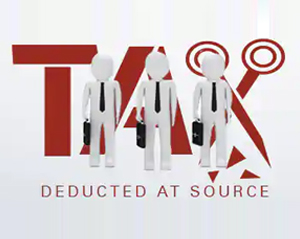The new income tax slabs in the financial year 2023-24 differ depending on the tax regime you choose. In India, taxpayers get a choice between two tax regimes – the old regime and the new regime. Under the old tax regime, individuals have the option to claim various deductions and exemptions to reduce their taxable income. While this grants taxpayers the benefit of reducing their overall tax liability, the trade-off is a higher tax rate. The old regime classifies taxpayers into three distinct categories based on age – below the age of 60, between the ages of 60 and 80 and over the age of 80.
In contrast, the new tax regime offers a simplified approach. It does not allow any deductions or exemptions. However, it imposes lower tax rates across tax slabs. Moreover, it is the same for all taxpayers, irrespective of age.
What is an Income Tax Slab?
An income tax slab refers to the range of income levels into which taxpayers are categorised. Taxpayers are categorised into these slabs based on their annual income in a financial year. Each income tax slab has its own set of tax rates. The income tax you are required to pay is determined by the specific slab or range your total income falls into.
Income Tax Slab Rates for FY 2023-24 (AY 2024-25)
The income tax slab for AY 2024-25 can differ per your chosen tax regime. Below is how this can differ:
What is the Old Tax Regime?
What is the New Tax Regime?
The old tax regime is the tax regime that allows you to claim all deductions. Under this regime, you can claim deductions, exemptions and more to lower your tax liabilities. Below are the income tax slabs for the same:
Taxpayers under the age of 60
| Income slabs | Tax rate |
|---|---|
| Up to ₹ 2.5 lakh | NIL |
| ₹ 2.5 lakh - ₹ 5 lakh | 5% (tax rebate u/s 87A is available) |
| ₹ 5 lakh - ₹ 10 lakh | 20% |
| > ₹ 10 lakh | 30% |
Taxpayers between the ages of 60 and 80
| Income slabs | Tax rate |
|---|---|
| ₹ 0 - ₹ 3 lakh | NIL |
| ₹ 3 lakh - ₹ 5 lakh | 5% (tax rebate u/s 87A is available) |
| ₹ 5 lakh - ₹ 10 lakh | 20% |
| > ₹ 10 lakh | 30% |
Taxpayers over the age of 80
| Income slabs | Tax rate |
|---|---|
| ₹ 0 - ₹ 5 lakh | NIL |
| ₹ 5 lakh - ₹ 10 lakh | 20% |
| > ₹ 10 | 30% |
Comparison of tax rates between the New Tax Regime and the Old Tax Regime for FY 2023-24 (AY 2024-25)
| Income tax slabs | Old tax regime | New tax regime | |||
|---|---|---|---|---|---|
| < 60 years & NRIs | < 60 to < 80 years | < 80 years | FY 2022-23 | FY 2023-24 | |
| ₹ 0 - ₹ 2,50,000 | NIL | NIL | NIL | NIL | NIL |
| ₹ 2,50,000 - ₹ 3,00,000 | 5% | NIL | NIL | 5% | NIL |
| ₹ 3,00,000 - ₹ 5,00,000 | 5% | 5% (tax rebate u/s 87A is available) | NIL | 5% (tax rebate u/s 87A is available) | 5% (tax rebate u/s 87A is available) |
| ₹ 5,00,000 - ₹ 6,00,000 | 20% | 20% | 20% | 10% | 5% |
| ₹ 6,00,000 - ₹ 7,50,000 | 20% | 20% | 20% | 10% | 10% |
| ₹ 7,50,000 - ₹ 9,00,000 | 20% | 20% | 20% | 15% | 10% |
| ₹ 9,00,000 - ₹ 10,00,000 | 20% | 20% | 20% | 15% | 15% |
| ₹ 10,00,000 - ₹ 12,00,000 | 30% | 30% | 30% | 20% | 15% |
| ₹ 12,00,000 - ₹ 12,50,000 | 30% | 30% | 30% | 20% | 20% |
| ₹ 12,50,000 - ₹ 15,00,000 | 30% | 30% | 30% | 25% | 20% |
| > ₹ 15,00,000 | 30% | 30% | 30% | 30% | 30% |
Criteria for opting for a new tax regime
There are no specific criteria for opting for a new tax regime. However, it comes with a trade-off, and you must forgo certain exemptions and deductions that are available in the old tax regime.
Which is better: the Old Tax regime Vs the New Tax regime?


The choice between the old tax regime and the new tax regime depends on various factors, and the optimal decision depends on your financial circumstances and investment profile. The income tax slab for FY 2023-24 for the new tax regime is lower, but you need to forgo certain exemptions and deductions. This makes it suitable only for individuals with limited investments or deductions. On the contrary, the old tax regime allows you to leverage deductions, but it has higher tax rates. This makes it advantageous for those with substantial investments.
To determine the most beneficial approach, you must calculate your tax liability under both regimes. You can also seek advice from a professional tax adviser or a chartered accountant.
Frequently Asked Questions
What is taxable income in India?
Taxable income in India refers to the income of an individual or an organisation on which the government levies tax. It is calculated as after deducting the deductions eligible under the Income Tax Act, 1961 from the income earned by an individual or an organisation.
Is the due date for filing tax return same for all taxpayers?
No, the due date for filing an income tax return is not the same for all taxpayers. In case of Individuals & HUF, who are not required to get audited under the Income Tax Act, 1961 the due date for filing the return is July 31st and for others, it is October 31st.
What is the time period considered for the purposes of income tax?
Income Tax is calculated on annual basis in India. It is calculated for the financial year starting from April 1 and ending on March 31.
Do I need to file Income Tax Return (ITR) if my annual income is below ₹ 2.5 lakh?
The taxation process is dependent on a number of factors. Please get in touch with a personal tax advisor.
Are there separate slab rates for males and females?
No. The slab rates for males and females are the same.
Are there separate slab rates for different age groups?
Yes. There are separate slab rates for taxpayers aged below 60 years, between 60 to 80 years (senior citizens) and above 80 years (super senior citizens) under old tax regime.
Will my income be taxed if I am an agriculturist?
The agricultural income is exempt from the income tax. However, if an agriculturist has non-agricultural income, then it would be taxable.







